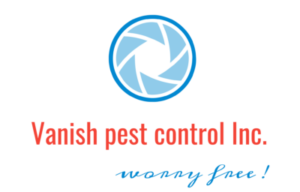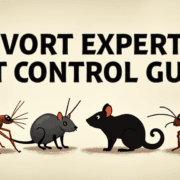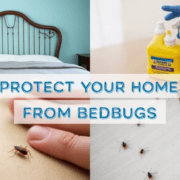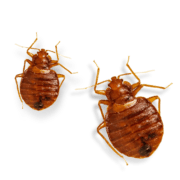Pest Control: Essential Guide for Homeowners and Businesses
Pest control is essential for maintaining a safe and healthy environment, whether in residential or commercial spaces. It involves not just the eradication of unwelcome pests but also the implementation of effective pest management strategies to prevent future infestations. Understanding the importance of pest control can help individuals recognize pest infestation signs early and take appropriate action. For instance, professional pest services can offer tailored solutions that address specific pest problems, ensuring comprehensive treatment. However, it’s crucial to be aware of the DIY pest control risks, as improper handling can exacerbate infestations and lead to serious health issues.
The management of unwanted organisms, commonly referred to as pest management, plays a vital role in ensuring our living and working spaces remain comfortable and safe. This field encompasses a variety of strategies aimed at controlling pest populations, from insects like cockroaches and ants to larger animals such as raccoons. Understanding the nuances of pest control is critical for recognizing the signs of pest infestations and effectively addressing them. Many people may consider DIY solutions, but the risks associated with such methods often outweigh the benefits. Engaging with professional pest services not only guarantees effective treatment but also emphasizes the importance of long-term pest prevention.
The Importance of Pest Control in Residential Spaces
Pest control is not just a matter of aesthetics; it plays a vital role in maintaining the health and safety of residential environments. Pests such as rodents, cockroaches, and termites can pose serious health risks, particularly to vulnerable populations like children and the elderly. For instance, rodents are known carriers of diseases that can spread through their droppings and urine, while termites can silently destroy the structural integrity of homes. By prioritizing pest control, homeowners can protect their living spaces from potential health hazards and costly damages.
Moreover, a proactive approach to pest control is essential for preserving property value. A home infested with pests can quickly lose its appeal and market value, leading to significant financial losses. Regular pest management practices, including inspections and preventative measures, can help detect issues early and prevent infestations from escalating. Engaging professional pest services not only addresses current problems but also reinforces a commitment to maintaining a healthy and safe living environment.
Recognizing Pest Infestation Signs
Identifying the signs of pest infestations early is crucial for effective pest management. Homeowners should be vigilant for common indicators such as droppings, gnaw marks, and visible nests. For example, the presence of small dark droppings in kitchen areas may suggest a rodent problem, while discarded wings can indicate a termite infestation. Additionally, unusual odors or unexplained damage to property should not be overlooked, as these can signal underlying pest issues. Awareness of these signs enables timely intervention, minimizing the risk of a full-blown infestation.
Furthermore, understanding the life cycles and behaviors of various pests can enhance detection efforts. For instance, knowing that certain pests breed rapidly can motivate homeowners to act quickly upon discovering signs of infestation. This knowledge not only aids in recognizing pest problems but also reinforces the importance of hiring expert pest control services, which can provide thorough inspections and targeted treatments based on the specific pest identified.
The Risks of DIY Pest Control
While DIY pest control may seem like a cost-effective solution, it often comes with significant risks. Homeowners may misuse chemical pesticides, leading to hazardous exposure for themselves and their pets. Many pesticides contain toxic substances that can result in severe health complications if not handled properly. Moreover, without professional training, individuals may struggle to identify the pest species accurately, resulting in ineffective treatments that fail to eradicate the problem.
Additionally, the financial implications of attempting DIY pest control can be misleading. Homeowners may initially save money, but repeated purchases of ineffective products can accumulate costs over time. Ultimately, the lack of comprehensive pest management can lead to larger infestations that require professional intervention, negating any savings from DIY attempts. This highlights the importance of considering expert pest control services for effective and safe pest management.
Benefits of Professional Pest Control Services
Engaging professional pest control services offers numerous benefits that extend beyond simple pest removal. One of the primary advantages is the expertise and experience that professionals bring to the table. Trained technicians can quickly identify pest species and their behaviors, allowing for tailored treatment strategies that ensure effective eradication. This level of precision is often unattainable with DIY methods, which can lead to incomplete pest management.
In addition to immediate relief, professional pest services focus on long-term prevention strategies. They assess the property for potential entry points and conducive conditions for pests, providing recommendations for ongoing maintenance and monitoring. This comprehensive approach not only eliminates current infestations but also minimizes the risk of future occurrences, contributing to a healthier living environment over time.
What to Look for in a Pest Control Expert
When selecting a pest control expert, several key factors should be carefully evaluated to ensure effective pest management. First and foremost, verifying the credentials of any pest control service is crucial. This includes checking for proper licenses and certifications, which demonstrate that the professionals have the necessary training and adhere to industry regulations. A reputable pest control expert will also have a solid track record of successfully managing various pest issues.
Another important consideration is the variety of services offered by the pest control company. Some services may specialize in particular types of pests, while others provide comprehensive pest management solutions. Understanding the company’s approach and the methods they employ can help clients make informed choices tailored to their specific pest control needs. Additionally, prioritizing environmentally friendly practices is increasingly important, as many consumers seek pest management solutions that minimize risks to human health and the environment.
The Process of Professional Pest Control
The professional pest control process begins with a thorough inspection of the property. Pest control technicians assess various areas, including basements, attics, and the exterior, to identify the extent of the infestation and potential entry points. This meticulous examination is essential for crafting a tailored treatment plan that addresses the specific needs of the property and the pests involved.
Following the inspection, pest control experts implement a comprehensive treatment plan that may include a combination of chemical treatments, baits, and sanitation recommendations. Safety is paramount during this process, as professionals adhere to guidelines to protect residents and the environment. Moreover, follow-up visits are typically scheduled to monitor the effectiveness of the treatment and make necessary adjustments, ensuring long-term success in pest management.
Preventative Measures for Pest Control
Preventative measures are essential for maintaining a pest-free environment. Homeowners can significantly reduce the risk of infestations by adopting effective sanitation practices, such as regularly cleaning kitchens and removing food debris. Additionally, keeping living spaces clutter-free minimizes hiding spots for pests, making it less likely for them to establish themselves in the home.
Landscaping also plays a vital role in pest prevention. By maintaining gardens and trimming overgrown vegetation, homeowners can limit the number of potential hiding places for pests. Regular property maintenance checks for cracks and gaps that could serve as entry points are equally important. Collaborating with pest control professionals can further enhance preventative strategies, as they provide tailored advice focused on specific properties.
Cost Considerations for Pest Control Services
Understanding the costs associated with pest control services is crucial for property owners. Average prices can range from $100 to $300, influenced by factors such as the type of pest, the size of the property, and the severity of the infestation. It’s important to recognize that investing in professional pest control can yield significant long-term savings by preventing the extensive damage and health risks that untreated infestations can cause.
Many pest control companies offer customized plans that cater to individual needs, whether it’s a one-time treatment or ongoing maintenance. This flexibility allows homeowners to select a service that best fits their budget and pest management requirements. Ultimately, considering both the upfront costs and potential long-term benefits leads to more informed decisions regarding pest control services.
Conclusion: The Necessity of Expert Pest Control
In conclusion, the necessity of hiring expert pest control services cannot be overstated. Professional pest management offers comprehensive solutions that not only address immediate infestations but also prevent future issues. The knowledge and tools that pest control experts possess are invaluable in safeguarding residential and commercial spaces from the health risks and property damage associated with pests.
Furthermore, engaging professional services fosters peace of mind for homeowners and business owners alike. By entrusting pest management to qualified technicians, individuals can rest assured that their properties are being treated effectively and safely, allowing them to focus on their daily lives without the stress and frustration of pest-related challenges.
Frequently Asked Questions
What is the importance of pest control in residential and commercial settings?
Pest control is vital in residential and commercial settings to prevent health risks and structural damage caused by pests. Effective pest management helps to eliminate unwanted insects and rodents, ensuring a safe and healthy environment for occupants. Regular pest control practices can also protect businesses from financial losses and reputational damage due to pest infestations.
What are common signs of pest infestation that I should look for?
Common signs of pest infestation include droppings, gnaw marks on food packaging, nests, and actual sightings of pests like ants or cockroaches. Unpleasant odors or unexplained damage to property can also signal an infestation. Recognizing these signs early can help in effective pest management and prevent a worsening situation.
What are the risks associated with DIY pest control?
DIY pest control can pose significant risks, including improper use of pesticides that can harm humans and pets. Many homeowners lack the knowledge to effectively identify and eliminate pests, leading to incomplete eradication. This can result in greater infestations and higher costs in the long run, making professional pest control a safer and more effective option.
How do professional pest services ensure effective pest management?
Professional pest services use a systematic approach that includes an initial inspection to identify pest types and infestation levels. They develop a tailored treatment plan, employ effective pest control methods, and provide follow-up visits to monitor and adjust treatments as necessary. This ensures both immediate relief and long-term pest management solutions.
What should I look for when hiring a pest control expert?
When hiring a pest control expert, check their credentials, including licenses and certifications. Reading customer reviews can provide insights into their service quality and effectiveness. Additionally, inquire about their pest management techniques, the types of pests they handle, and whether they use environmentally friendly practices.
What preventative measures can I take to avoid pest infestations?
To prevent pest infestations, maintain effective sanitation practices, regularly clean living spaces, and properly store food. Keep gardens tidy, eliminate clutter, and seal any cracks or gaps in your home. Collaborating with pest control professionals can provide tailored preventative strategies to minimize risks.
What are the typical costs associated with pest control services?
The cost of pest control services can vary greatly, typically ranging from $100 to $300 depending on factors such as the type of pest, the severity of the infestation, and the size of the property. While initial costs may seem high, investing in professional services can prevent more significant expenses related to untreated infestations.
How can pest control services contribute to a healthier living environment?
Pest control services contribute to a healthier living environment by effectively eliminating pests that pose health risks, such as rodents and insects. They also educate clients on preventative measures, ensuring that homes remain pest-free in the long term and enhancing overall quality of life.
What is Integrated Pest Management (IPM) in pest control?
Integrated Pest Management (IPM) is a comprehensive approach that combines biological, cultural, and chemical controls to minimize pest risks. Pest control professionals utilize IPM to address pest problems effectively while prioritizing environmental safety and reducing harm to human health.
How often should I schedule pest control services?
The frequency of pest control services depends on the specific needs of your property and the types of pests involved. Regular inspections and treatments may be recommended quarterly or biannually, especially in areas prone to infestations. Consulting with pest control professionals can help determine the best schedule for your situation.
| Key Points | Description |
|---|---|
| Definition of Pest Control | Management and elimination of unwanted insects and organisms in residential and commercial spaces. |
| Types of Pests | Includes rodents, ants, cockroaches, termites, raccoons, and bats. |
| Health Risks | Pests can carry diseases and cause structural damage, impacting safety and health. |
| Importance of Professional Services | Expert services can identify infestations, provide tailored solutions, and ensure long-term prevention. |
| DIY Risks | Improper pesticide use can harm health and lead to incomplete pest elimination. |
| Preventative Measures | Regular sanitation, maintenance checks, and expert collaboration can reduce infestations. |
| Cost Considerations | Initial costs may vary, but investing in professional services can save money in the long run by preventing extensive damage. |
Summary
Pest control is an essential process for maintaining a safe and healthy environment in both residential and commercial spaces. Understanding the various strategies and benefits associated with professional pest control services allows property owners to effectively manage and prevent infestations. By prioritizing expert help, individuals can not only eradicate current pest problems but also safeguard their properties against future invasions, ensuring a healthier living or working environment.






